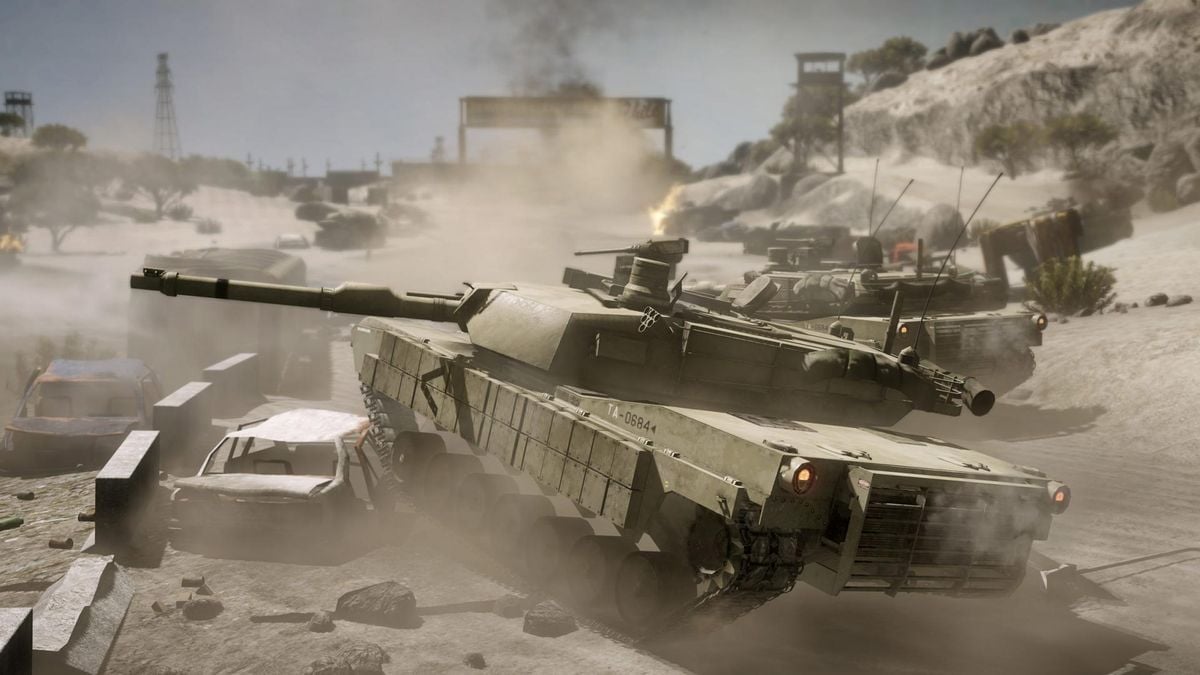

The variety in gameplay, balance between scale and focus, and unpredictability of a sandbox environment meant no two games were alike DICE would eventually push the envelope and build Battlefield titles around a 32-versus-32 experience, but Bad Company 2‘s 16-versus-16 players provided the “Only in Battlefield” moments without creating excessive chaos. On top of this, the Vietnam expansion provided all-new environments and guns for dedicated players to further their experience. The interplay between classes meant that players needed to rely on teammates to be successful, but at the same time, players who mastered the classes could adapt to fit any situation and perform for their team. The progression system in Bad Company 2 is deep enough to encourage replay and earning unlocks, but at the same time, it’s not so complex that one is overwhelmed by the number of available options. Players using buildings as cover and sniper nests needed to be cognisant of the fact that opponents could shell the buildings into the ground, and maps provided players plenty of options to move around, allowing them to play in the manner of their choosing. The multiplayer in Bad Company 2 was an even greater hit than the campaign: with its emphasis on destruction and superb map design, players found an experience unlike any other period game. Bad Company 2 had ended with B-Company successfully destroying Aguire and his Scalar Weapon, but as it turns out, the Russians had allowed Aguire to carry out his plan as a distraction for their invasion of North America, coming in through Alaska. Coupled with the fact that Bad Company 2‘s campaign takes players to South America, a region of the world that games often ignore, Bad Company 2‘s single player campaign was remarkably entertaining and endlessly replayable. The levity amongst members of B-Company made difficult situations seem more manageable, and even when all hope seems lost, B-Company member Marlowe encourages Haggard and the others that they should keep on fighting, if only to save the Dallas Cowboys and their iconic cheerleaders, giving Haggard the motivation he needs to continue kicking ass.

Even when under heavy fire, Haggard may make wisecracks about their situation.
#Battlefield bad company 2 campaign crack
During lulls in firefights, or while gamboling through South America, the members of B-Company crack bad jokes at one another and may wax philosophical. From the world-weary Redford, cautious Sweetwater and loud-mouthed demolitions expert Haggard, Bad Company 2 allowed the members of the 222nd Army Battalion’s B-Company squad to bounce off one another. By bringing in a cast of colourful characters, Bad Company 2 stepped away from this. Back then, modern military shooters possessed very grim and serious campaigns that accentuated how gritty and unglamourous warfare was, telling a dark tale of reluctant heroism before sending players into the high-paced sandbox of multiplayer.

The campaign was engaging because it offered a novel alternative to Call of Duty: Modern Warfare 2. This was ultimately unconvincing, as Bad Company 2‘s success boils down to one simple fact: both its single player campaign and multiplayer experiences were solid, essential parts of the experience that drew players in. In subsequent years, Battlefield fans had hoped for a sequel to Bad Company 2, in the form of Bad Company 3, and then-general manager of DICE, Karl-Magnus Troedsson, stated that Bad Company 3 was not in development because the studio hadn’t quite understood why Bad Company 2 was as successful as it was. When it launched in March 2010, Battlefield: Bad Company 2 became DICE’s most acclaimed title, with critics praising the game for being a fantastic continuation of 2008’s Bad Company and improving on its predecessor in every way. Not here, they’re coming in through Alaska!” –General Braidwood


 0 kommentar(er)
0 kommentar(er)
